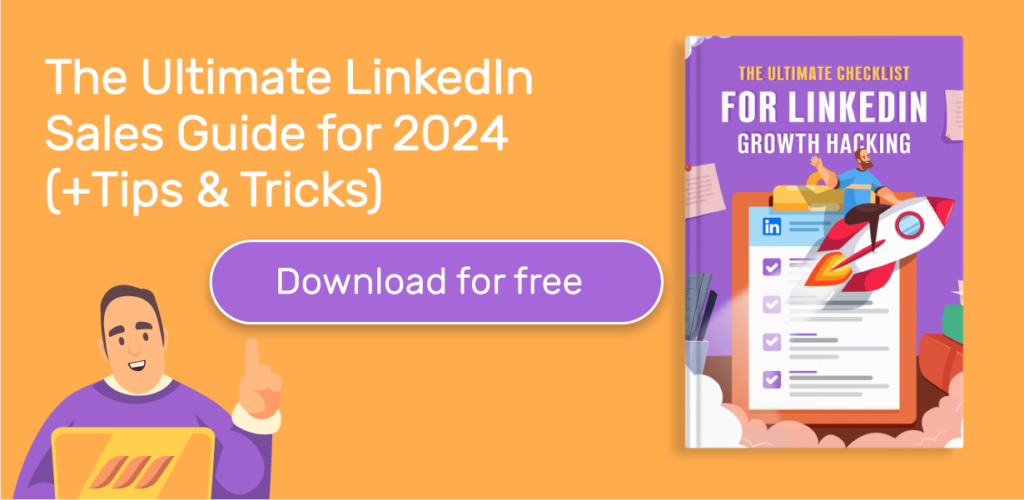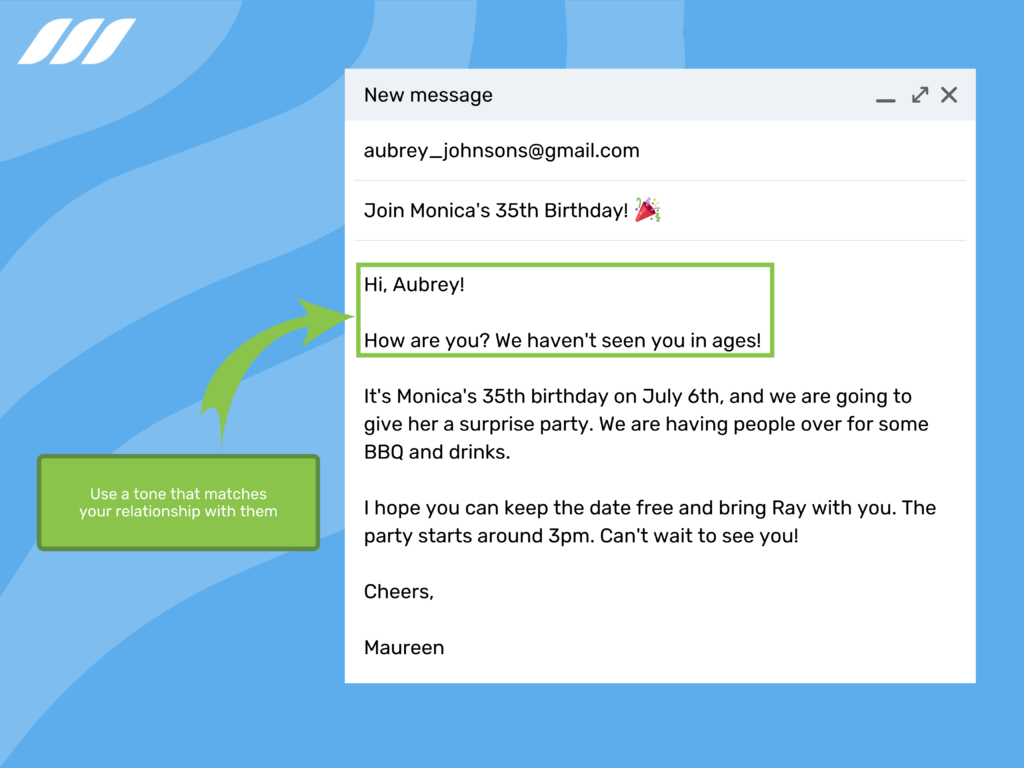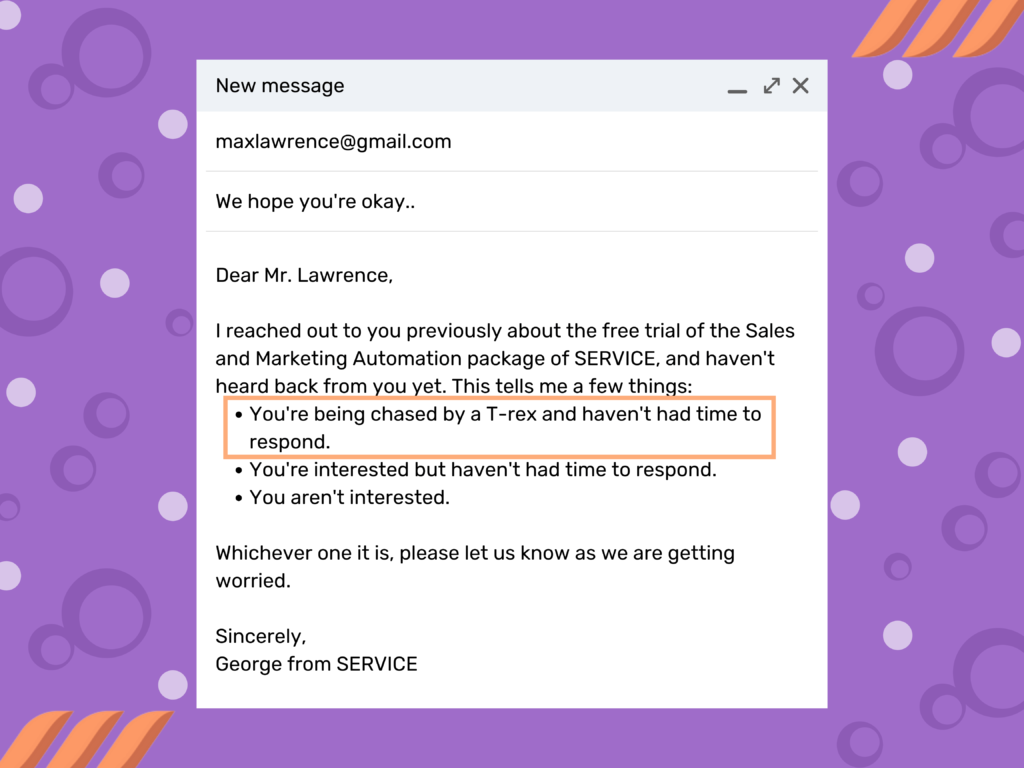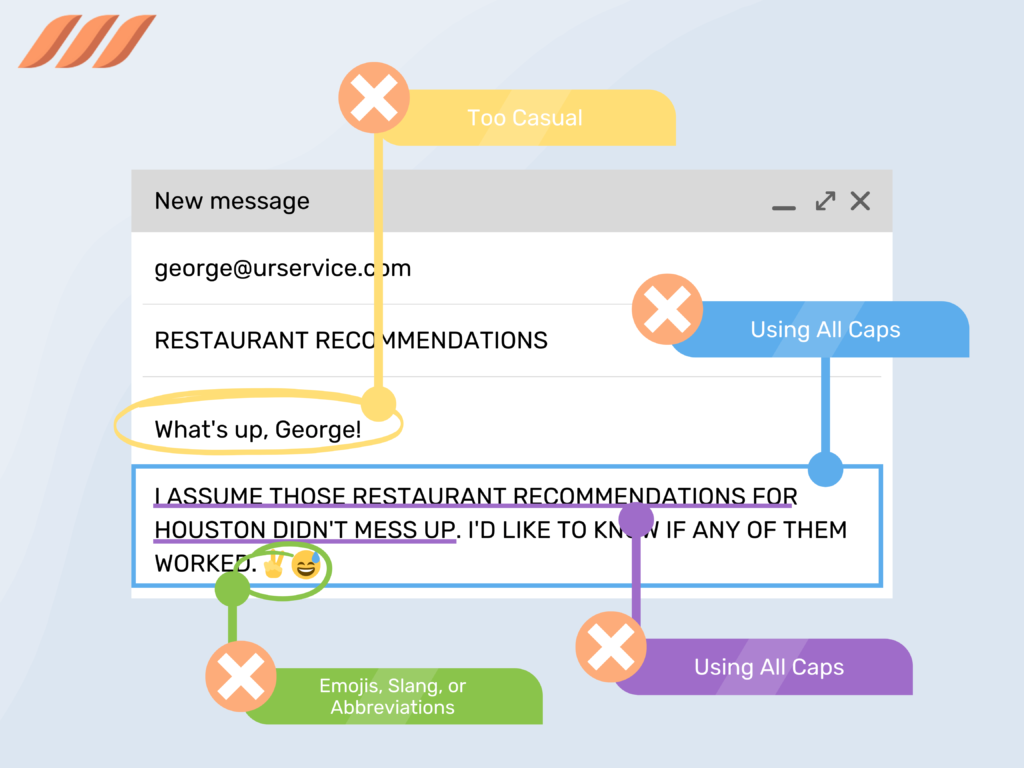|
Getting your Trinity Audio player ready...
|
Emails are our primary mode of communication today, and starting an email is an essential aspect of professional and personal communication. Whether it’s for work, school, or personal purposes, we all need to know how to start an email properly.
Whether you are communicating with a business partner, prospect, or colleague, how you begin an email sets the tone for the rest of your message. In fact, a well-written email intro can be the difference between a successful or unsuccessful conversation.
In this article, we will explore why email intros are important and provide you with different ways to start an email that you can use in various circumstances. Plus, we’ll provide tips on how to write the best email opening lines. Keep reading!
Read also: How to End an Email
Why Are Email Intros Important?
As mentioned above, an email introduction sets the tone for your entire message. It’s your first impression on the recipient and can affect how they perceive you and your message. A well-written opening line can capture the reader’s attention, make them feel valued, and set the stage for a successful conversation.
On the other hand, a poorly written or inappropriate email opening can turn off the recipient or make them ignore your message. It can also impact the success of your email’s intent, whether it’s to make a sale, establish a professional connection, or simply maintain a healthy relationship.
Email opening lines should be engaging, friendly, and relevant to the recipient. A great email intro helps build rapport, sets the tone for the conversation, and encourages the recipient to read on.
Read also: Best Time to Send Cold Emails

Different Ways to Start an Email Depending on Circumstances
It’s no secret that email is a fast and convenient mode of communication. It allows you to converse with people all over the world. But, when it comes to starting an email, many people struggle to find the right words.
Let’s explore how to start an email, depending on the circumstances.
Formal/Official Email
A formal or official email is typically used in a professional setting, such as a job application or a business inquiry. If you’re writing a formal email, it’s essential to use a professional tone.
Start with a formal greeting, such as “Dear Mr./Ms./Dr. [Last Name]” or “To Whom It May Concern.” Avoid using overly casual language or abbreviations, and make sure your grammar and punctuation are correct.
Informal Emails
An informal email is typically used in a personal setting, such as emailing a friend or family member. As such, it allows for a more relaxed tone. You can start with a friendly greeting, such as “Hi [First Name]” or “Hey [First Name].” But be careful not to be too casual, as you still want to maintain a level of professionalism.
Cold Emails
A cold email is sent to someone you have never met or communicated with before. Starting a cold email can be challenging, as you need to make a good first impression.
You can start a cold email by introducing yourself and explaining why you’re reaching out. Consider using a subject line that grabs the recipient’s attention, such as “Quick question” or “Introduction.”
Make sure to personalize the email as much as possible and avoid using generic language. Also, make sure to research examples of cold email opening lines for marketing & sales and pick the best ones to raise your response rates.
Follow-Up Emails
A follow-up email is sent after a previous email or conversation. You can use a follow-up email in various situations, such as job interviews or sales pitches. But are there good ways to start an email follow-up, you ask?
It is a good idea to start a follow-up email by referencing your previous communication and reminding the recipient of the context. Use a friendly and professional tone, and be clear about what you’re following up on.
Thank You Emails
A thank you email is sent to express gratitude after a meeting or conversation. It is used in a variety of situations, such as after a job interview or meeting with a client.
Start a thank you email by expressing your gratitude and thanking the recipient for their time. Be specific about what you’re thanking them for, and use a friendly and appreciative tone.
Read also: LinkedIn Thank You Message
Apology Emails
An apology email is sent to apologize for a mistake or misunderstanding. It is typically used in a professional setting, such as in the workplace or a business context. Start by acknowledging the mistake and taking responsibility for it. Use a sincere and empathetic tone, and be clear about what you apologize for.
So, as you can see, there are many different ways to start an email, depending on the circumstances. Whether you’re writing a formal email or a casual email, it’s important to choose your opening carefully, depending on the situation and the relationship you have with the recipient.
Read also: Best Email Marketing Automation Tools


How to Start an Email [19 Examples]
Now that you know the importance of email intros and how to change your email opening depending on the circumstances, let’s look at a few hands-on email opening examples for your inspiration. You may want to use these email small talk examples as email templates to write results-oriented emails.
1. Formal Email
Subject: [Name], Regarding [Topic]
Hello [Name],
I hope this email finds you well. I am writing to you regarding [Topic].
2. Informal Email
Subject: [Topic]
Hi [Name],
Hope you’re doing well! I just wanted to reach out about [Topic].
3. Cold Email
Subject: Introduction
Dear [Name],
My name is [Your Name], and I [Your position or company]. I came across your [website, LinkedIn profile, etc.] and thought we could potentially [reason for reaching out].
4. Follow-Up Email
Subject: Following Up on [Topic]
Hi [Name],
I wanted to follow up on our previous conversation regarding [Topic]. I was wondering if there were any updates or if you had any further questions.
5. Networking Email
Subject: Mutual Connections
Dear [Name],
I hope this email finds you well. I noticed that we have a mutual connection through [Name of connection], and I wanted to reach out and introduce myself.
6. Job Application Email
Subject: [Position] Application
Dear Hiring Manager,
I am writing to express my interest in the [Position] position at [Company]. Attached is my resume for your consideration.
7. Thank You Email
Subject: Thank You
Hi [Name],
Thank you so much for [reason for thanking them]. I truly appreciate your [support, time, effort, etc.].
8. Apology Email
Subject: Apologies for [Mistake]
Dear [Name],
I wanted to reach out and apologize for [mistake]. I understand that [consequences of mistake], and I take full responsibility for my actions.
9. Request Email
Subject: Request for [Topic]
Hello [Name],
I hope this email finds you well. I am writing to request [topic or favor].
10. Sales Email
Subject: [Offer] for [Product/Service]
Hello [Name],
I wanted to reach out and introduce you to [Product/Service]. [Offer or discount] is available for a limited time.





11. Reminder Email
Subject: Reminder about [Topic]
Hi [Name],
Just wanted to send a reminder about [Topic].
12. Introduction Email
Subject: Introduction
Dear [Name],
I wanted to reach out and introduce myself. My name is [Your Name], and I [Your position or company].
13. Feedback Email
Subject: Feedback Request
Hello [Name],
I am writing to request feedback on [Project/Task]. I value your opinion and would appreciate any input you may have.
14. Collaboration Email
Subject: Collaboration Opportunity
Hi[Name],
I hope this email finds you well. I came across your [work, profile, etc.] and thought we could collaborate on [Project/Idea].
15. Congratulations Email
Subject: Congratulations on [Achievement]
Dear [Name],
Congratulations on [Achievement]! [Additional congratulatory message or offer of assistance].
16. Announcement Email
Subject: Announcement
Hi [Name],
I wanted to reach out and let you know about [Announcement]. [Additional details or call to action].
17. Survey Email
Subject: Survey Request
Dear [Name],
I am requesting your participation in a survey about [Topic]. Your feedback is valuable to us.
18. Invitation Email
Subject: Invitation
Hi [Name],
I wanted to extend an invitation to [Event/Meeting]. [Additional details or RSVP request].
19. News Update Email
Subject: News Update
Dear [Name],
I wanted to reach out and provide an update on [Topic]. [Additional details or call to action].
So, there you have it, 19 examples of email intros! You can use these examples as inspiration or templates to write effective email opening lines.
Read also: Email Outreach Tracking [Tips and Tricks]





How to Write the Best Email Opening Lines
Whether it’s for business or personal reasons, your email opening line can have a significant impact on the response you receive. Writing the best email opening lines is a skill you can learn with practice.
Let’s take a closer look at how you can master the art of writing effective email opening lines:
Keep it Short and Sweet
When it comes to email opening lines, less is often more. A short and sweet opening line is more likely to capture the reader’s attention than a long and wordy one. As such, it is good to keep your opening line to no more than one or two sentences. Plus, make sure it’s easy to read and understand.
Personalize Your Email Opening


Did you know that personalizing your email opening line can make all the difference? Address the recipient by name and try to use a tone that matches your relationship with them. If you’re writing to a friend, you can be more informal than if you’re writing to a potential employer.
Get Straight to the Point
Avoid beating around the bush with your email opening line. Get straight to the point and tell the reader why you’re writing. If you’re requesting information, say so. If you’re offering assistance, let them know. The clearer your message, the more likely you are to get a response.
Use a Hook
A hook is a catchy phrase or sentence that grabs the reader’s attention and encourages them to keep reading. It can be a question, a statement, or a call to action. Using a hook in your email opening line can be an effective way to engage the reader and encourage them to respond.
Be Professional
While it’s important to be personal and engaging in your email opening line, it’s also essential to maintain a professional tone. Avoid using slang or informal language that may be inappropriate in a business setting. Use proper grammar and spelling, and respect the recipient’s time.
Use Humor (if appropriate)


Many people wonder how to start off a professional email with a little fun. Humor has your back! Yes, humor is a great way to break the ice and connect with the reader in a fun way. However, it’s essential to use humor appropriately and avoid anything that may be offensive or inappropriate. If you’re not sure if your joke or pun is appropriate, it’s best to err on the side of caution and skip it.
Be Creative
Finally, don’t hesitate to get creative with your email opening lines. Think outside the box and come up with something unique and memorable. A creative email opening line can make a lasting impression and increase the chances of getting a response.
By following these tips, you’ll be well on your way to writing email opening lines that get noticed and get results.
Read also: Best Email Drip Campaign Examples
What You Should Avoid to Begin Your Email


While there are many things you can do to make a great first impression with email opening lines, there are also some things you should avoid. Below are certain things you should avoid to start your email on the right foot.
Avoid Being Too Casual
While it’s important to be friendly and approachable in your emails, you should avoid being too casual. Starting your email with “Hey” or “What’s up?” can come across as unprofessional or even disrespectful, especially if you’re writing to someone you don’t know very well.
Avoid Using All Caps
Using all caps in your email opening can be perceived as yelling or being aggressive. Instead, use proper capitalization and punctuation to convey your message clearly and professionally.
Avoid Slang or Abbreviations
Slang and abbreviations can be confusing, and not everyone can understand them. If you’re writing to someone you don’t know well, it’s best to avoid using any language that may not be universally understood. This includes acronyms, shorthand, and even emojis.
Avoid Making Assumptions
When you start an email with assumptions, it can make the recipient feel uncomfortable or even defensive. For example, starting an email with “I assume you’re not interested” can be off-putting and may discourage the recipient from responding.
Avoid Being Too Formal
While it’s important to maintain a professional tone in your emails, being too formal can be just as off-putting as being too casual. Avoid using overly formal language or unnecessarily complex sentences that may be difficult to understand.
Avoid Being Too Wordy
Starting your email with a long, rambling sentence can make it difficult for the recipient to understand your message. Keep your opening sentence short and to the point, making sure it clearly conveys the purpose of your email.
Avoid Being Negative
When you start your email with a negative tone, it can put the recipient on the defensive and make them less likely to respond. So, make sure to avoid starting your email with complaints or criticisms and instead focus on positive and constructive language.
Starting your email off on the right foot is essential for effective communication. By following these guidelines, you can ensure that your email opening is professional, approachable, and effective in conveying your message.





Conclusion
Starting an email can be challenging, especially if you’re unsure about the best way to begin. Thankfully, with these tips on how to start an email, you have various options to choose from depending on the tone and purpose of your message.
From a direct statement to a friendly greeting or even a humorous opening, there are plenty of ways to grab the reader’s attention and make a positive first impression. What’s more, the templates offer practical examples that you can customize to fit your unique situation.
Remember, the opening line is a crucial aspect of writing emails, so take the time to craft an opening that is professional, engaging, and tailored to your audience. Plus, using social media to write email opening lines is also a good idea. For instance, you’ll find many insightful LinkedIn articles that share valuable tips on writing email intros. Using these tips, you’ll be well on your way to writing effective and impactful emails.
![How to Start an Email Professionally [+Templates] How to Start an Email Professionally [+Templates]](https://dripify.io/wp-content/uploads/2023/04/5-3.png)
![How to Write a Price Increase Letter [Tips, Examples, and Free Template]](https://dripify.io/wp-content/uploads/2021/12/27.png)
![How to Write an Effective Collaboration Email [+Templates]](https://dripify.io/wp-content/uploads/2023/05/13.png)



